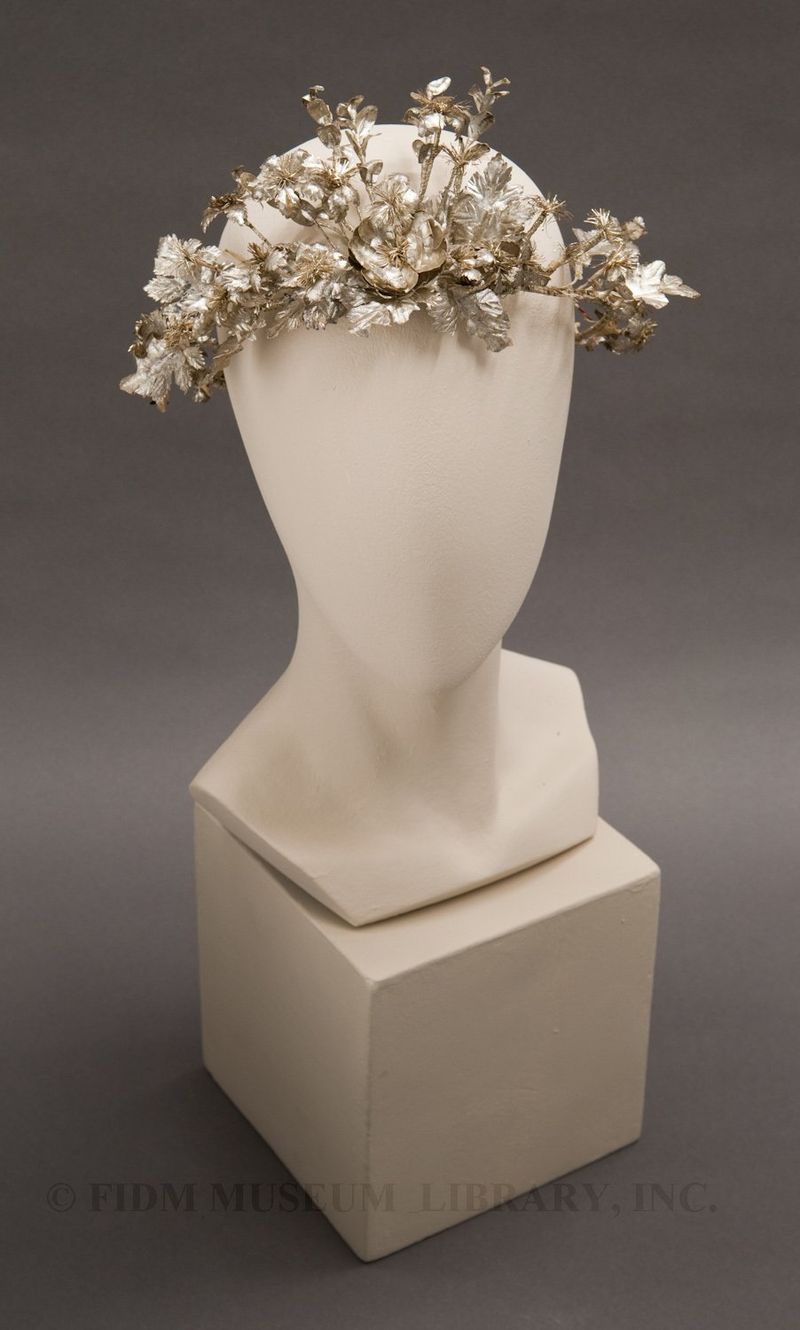Silver paper headdress, c. 1860
Anyone interested in the history of fashion quickly realizes that fashion is a series of cyclical repetitions. Contemporary silhouettes, colors and design details reference recent and historic styles, often with only slight modifications to bring a garment into the present moment. This cycle isn't new or unique to contemporary culture; documented revivals of historic fashions exist in the nineteenth century and earlier. Fashion historian Barbara Baines has suggested that revivals of historic dress styles are due to a number of factors, including nostalgia and an interest in associating oneself with specific, perceived characteristics of the past. In addition to these psychological factors, concrete events like an archaeological discovery, museum exhibition or period film can inspire a revival of historic styles.1
One of the most frequently occurring revivals is that of ancient Greek and Roman dress. This can take the form of a draped garment inspired by Greek and Roman statuary or the presence of a motif like the Greek key. In the nineteenth century, the influence of Greek and Roman dress was seen in the slim, light-colored, empire waist dresses popular at the beginning of the century and the artistic or aesthetic styles that emerged in the 1860s. Also popular in the nineteenth century were jewelry and accessories inspired by the styles of ancient Greece, Rome and other ancient cultures. In 1864, Godey's Lady's Book noted the popularity of historic revivals in jewelry: "Roman, Greek and Egyptian [jewelry] are greatly in demand."2
 Silvered paper headdress
Silvered paper headdress
c. 1860
Museum Purchase
2008.35.2
Delicate headdresses made of jewels, ribbons and real or artificial flowers and leaves were popular in the late 1850s and early 1860s. These were worn primarily for evening or formal dress, and often matched or complemented motifs seen on the dress itself. Whether incorporating roses, ribbons or the oak leaves seen here, this style is a clear reference to the crowns seen on ancient Greek and Roman statuary. In both ancient Greece and Rome, wreaths of flowers or leaves were awarded to Olympic athletes, military commanders and supreme rulers. Oak leaves and acorns have a particular significance, as they were sacred to the Greek god Zeus and his Roman equivalent, Jupiter.
Like many consumer goods of the mid-nineteenth century, headdresses could be purchased at multiple price-points. The most lavish, worn by royalty and wealthy aristocrats, incorporated precious jewels, gold and silver. More modest headdresses were made of leftover ribbon and fresh flowers. The silver paper headdress seen here was perhaps a less expensive version of the diamond headdresses worn by the upper echelons of society. Like some of its more expensive cousins, this delicate paper headdress was meant to tremble delicately when the wearer moved. Each leaf and flower is wired to the headband, so that the slightest movement creates a delicate, trembling movement akin to the wind gently brushing the leaves of a tree.
1 Baines, Barbara. Fashion Revivals: from the Elizabethan Age to the Present Day London: Batsford Ltd. 1981.
2 "Fashions." Godey's Lady's Book and Magazine Jan. 1864: 103.